41 reading carbs on food labels
How to Read a Food Label to Make Sure It's Keto in 3 Easy Steps How to calculate net carbs Subtract Dietary Fiber and Sugar Alcohols (if any) from the Total Carbohydrate. *Total Carbohydrate minus Dietary Fiber, minus Sugar Alcohol (if any) = Net Carbs Total Carbohydrate ( 4 grams) - Dietary Fiber ( 1 gram) = 3 gram s Net Carbs Reading Food Labels | ADA - American Diabetes Association The Nutrition Facts labels on foods are really the key to making the best choices. We'll cover the basics so that these labels make shopping easier for you. Get started Understanding Carbs You've heard it all. From carb-free to low-carb, to whole and empty carbs, it's hard to know what it all means. Learn more Food & Blood Sugar
Understanding Food Nutrition Labels | American Heart Association 1 - Start with the serving information at the top. This will tell you the size of a single serving and the total number of servings per container (package). 2 - Next, check total calories per serving and container. Pay attention to the calories per serving and how many calories you're really consuming if you eat the whole package.

Reading carbs on food labels
Food Labels | CDC - Centers for Disease Control and Prevention If you eat the whole thing, you are eating 8 times the amount of calories, carbs, fat, etc., shown on the label. Total Carbohydrate shows you types of carbs in the food, including sugar and fiber. Choose foods with more fiber, vitamins, and minerals. Choose foods with lower calories, saturated fat, sodium, and added sugars. Avoid trans fat. How to Use the Nutrition Facts Label — Diet Doctor Very simply, after calculating net carbs, take a look at the grams of fat and protein on the nutrition facts label. There are about 9 grams of net carbs in this KIND bar. Let's say you are comparing it to another snack with 8 to 10 grams of net carbs. They are close. How do you choose? How to Read Food Labels | mySugr Before reading the rest of the label, look at the serving size. The rest of the information — such as carbs, calories, sugars, fiber, and more — will be based on the serving size that's listed. Eating more than a serving size means you'll get more carbs, sugars, and calories than what's listed. Looking at the serving size also helps ...
Reading carbs on food labels. Reading Food Labels for Carbohydrates - dummies Reading food labels is a vital skill for anyone who counts carbohydrates. To find the amount of carbohydrates in your foods, follow these steps: Look for the line that reads "Total Carbohydrate" on the label. The value on this line will tell you how many grams of carbohydrates are in one serving of the food. Learning To Read Labels :: Diabetes Education Online On a nutrition food label, subtract the fiber from the total carbohydrate amount. When you read food labels, the grams of sugar are already included in the total carbohydrate amount, so you do not need to count this sugar amount separately. The grams of sugar listed include both natural sugars, from fruit or milk, and added sugars. Importance of Reading and Understanding Food Labels It is recommended to avoid intake of processed food that is rich in sodium, hydrogenated fatty acids, added sugars and additives, all of which should be listed in the declaration. Adopting the habit of reading information on food and taking into account what is stated on the labels is important for us to preserve our health, but it is also an ... Carb Counting and Diabetes | ADA For example, grains, sweets, starches, legumes and dairy all contain different amounts of carbs. Get up to speed on the three types of carbs, and what foods have them. When foods and drinks with carbs are digested, the carbs break down into glucose to fuel our cells, and the body's blood glucose, or blood sugar, level rises.
How to Read Food Labels Without Being Tricked - Healthline Still, processed foods that are labeled low-carb are usually still processed junk foods, similar to processed low-fat foods. Made with whole grains. The product may contain very little... Food Labels: Carbohydrates | Home & Garden Information Center The Daily Value (DV) for total carbohydrate is 300 grams (g) or 100% DV, based on a 2,000-calorie diet. This number combines several types of carbohydrates: dietary fiber, sugars and complex carbohydrates. Listed below total carbohydrate on the food label are the values for dietary fiber and sugars. Reading food labels: Tips if you have diabetes - Mayo Clinic Jun 25, 2021 · If your meal plan is based on carbohydrate counting, food labels become an essential tool. Look at total carbohydrates, not just sugar. Evaluate the grams of total carbohydrates — which include sugar, such as added sugars; complex carbohydrates; and fiber — rather than only the grams of sugar. Why Is Reading Food Labels Important? | livestrong Understanding what's in the foods you eat helps you make healthier choices. Checking food labels also makes it easy for you to compare the nutrient content of different options. A healthy diet is crucial throughout your lifetime and paying attention to nutrition labels is a good step toward improving your overall diet.
How to Read a Food Label | Atkins The FDA requires that a nutrition label include the total carbohydrates. The amount of dietary fiber and sugars must also be listed. However, the law does not require that other carbohydrate subcategories appear. Some manufacturers voluntarily include the subcategories of sugar alcohol and "other carbohydrates." Others do not. Food Labels and Counting Carbs - dummies Looking at the Total Carbohydrate amount on food labels is important because carbohydrates digest and eventually turn into glucose, which ends up in the bloodstream. Having diabetes means you should be paying attention to how much carbohydrate you're eating. Food labels help you do just that, but you need to look for the grams of carbohydrate ... How to Read Food Labels | Your Low Carb Hub The below label shows there are 4.3g of carbs in a 15ml serving size which is equivalent to one tablespoon. 3.4g of this is sugar. There is 22.7g of sugar in 100ml, that's 5.6 teaspoons of sugar. The World Health Organisation (WHO) recommends no more than 5-10 teaspoons of added sugar in an entire day. How to Understand and Use the Nutrition Facts Label | FDA - U.S. Food ... It can tell you if a serving of food is high or low in a nutrient and whether a serving of the food contributes a lot, or a little, to your daily diet for each nutrient. Note: some nutrients on...
This Is How to Read a Nutrition Facts Label on the Keto Diet Each nutrient listed on the label refers to the amount of that label contained in one serving, which is usually not the entire package. For instance, if "Total Carbohydrates" are listed as 10 grams (10 g), that's accurate for one serving.
Reading Food Labels and Avoiding Hidden Carbs - Kiss My Keto Blog Foods are made to be purposefully addictive with the addition of a variety of substances which are laughably called "repeat appeal" agents in the food industry. Some of the substances routinely added to our food are neurotoxic, meaning they damage the brain, and are more addictive than cocaine!
How To Read Food and Beverage Labels - National Institute on Aging These foods have a legal limit to how many calories, grams of fat, or carbohydrates (carbs) they can contain per serving. However, if a serving size is very small, you may end up eating multiple servings in one sitting, ultimately consuming the same amount of fat, calories, and carbs as the regular version of the food. Multigrain.
How to Read the New Food Label - The Johns Hopkins Patient Guide to ... The percent daily value (%DV) can be used as a quick guide to the food label. Try the 5/20 rule when reading a label. Think about 5% or less as low for any nutrient and 20% or more is high for any nutrient. The %DV is a great way to compare food products if the serving size is the same. Fiber is the nutrient on the label that you want to aim ...
Reading Food Labels Worksheets - WorksheetsCity Reading Food Labels Worksheet Have Fun Teaching Download Print Food Label Tips Download Print Free printable Reading Food Labels Worksheets to help students learn about Health And Nutrition. This worksheets are a very useful tool to improve students skill on Health And Nutrition subjects. Download our free printable worksheets today!
How To Figure Out The Carbs On Nutrition Labels Trying to interpret the carbohydrates on nutrition facts labels can be downright confusing. There's a number for total carbohydrates but then there are subheadings for dietary fiber, sugars, and sometimes insoluble fiber, sugar alcohols, and other carbohydrates. What Does Everything Mean? Total Carbohydrate, shown in grams, is first.
How To Read Nutrition Labels (Like a Pro) - Ditch The Carbs Firstly you need to understand the difference between total and net carbs. TOTAL CARBS = sugars + starches +fibre NET CARBS = total carbs - fibre Carbohydrates will be on the nutrition label are often broken down into carbohydrates, sugars, starch, and fiber. However, each brand may display its nutritional contents differently.
LABEL READING: CARBOHYDRATES AND SUGARS - Renaissance Nutrition Center ... The label may list as many as six items: Total Carbohydrate. Dietary Fiber. Soluble fiber. Sugars. Sugar alcohols. Other Carbohydrates. Some manufacturers voluntarily include the subcategories of sugar alcohol and "other carbohydrates.". Others do not.
Reading labels | Diabetes UK Always look at the 'total carbohydrate' on the label when carb counting. This will make sure you are counting both the complex (starchy) and simple (sugary) carbs in your food. Both will raise your blood glucose (blood sugar) levels, and need to be matched with insulin.
Food and Recipes Center: Easy, Healthy Recipe Ideas for Your ... May 16, 2022 · How to Read Food Labels ; Canola Oil ; Vegetarian Diet ; Low-Sodium Cooking ; Cooking With Spices ; Food Poisoning ; The Latest in Food & Recipes . News FDA Warns Against Cooking Chicken in NyQuil ...
3 Ways to Calculate Carbs - wikiHow Oct 25, 2022 · To calculate the grams of carbs in your food based on the weight, you need to know two things: the weight of the food item; and the "factor" for that food item. There is a different factor for each type of food (e.g. bread has a factor of 15, which means there are 15 grams of carbs for every ounce of bread). [2]
PDF Read the Food Label for Carbohydrates - National Institutes of Health Read the Food Label for Carbohydrates Food labels help you choose foods that are lower in calories and in carbohydrates and sweeteners. Here is a food label for a 12-ounce regular soda. The label provides lots of useful information. 1. Serving Size and Number of Servings The serving size is 12 ounces. There's 1 serving in this container. 2.
Reading Food Labels When You Have Diabetes - WebMD Being able to read and understand food and nutrition labels is essential, especially for those with diabetes. ... It has measurements of fat, cholesterol, sodium, carbohydrates, protein, vitamins ...
Low Carb Guide to Understanding Nutrition Labels - Virta Health According to labeling laws in the U.S., if a food contains less than 0.5g of trans fat per serving, the label can say 0g, so be sure to read the list of ingredients. You can spot trans fats by the words "hydrogenated" or "partially hydrogenated" with oils. Sugar-free or Low-carb: Don't be fooled by clever packaging and slick marketing.
PHSchool.com Retirement–Prentice Hall–Savvas Learning Company PHSchool.com was retired due to Adobe’s decision to stop supporting Flash in 2020. Please contact Savvas Learning Company for product support.
How to Read Food Labels | mySugr Before reading the rest of the label, look at the serving size. The rest of the information — such as carbs, calories, sugars, fiber, and more — will be based on the serving size that's listed. Eating more than a serving size means you'll get more carbs, sugars, and calories than what's listed. Looking at the serving size also helps ...
How to Use the Nutrition Facts Label — Diet Doctor Very simply, after calculating net carbs, take a look at the grams of fat and protein on the nutrition facts label. There are about 9 grams of net carbs in this KIND bar. Let's say you are comparing it to another snack with 8 to 10 grams of net carbs. They are close. How do you choose?
Food Labels | CDC - Centers for Disease Control and Prevention If you eat the whole thing, you are eating 8 times the amount of calories, carbs, fat, etc., shown on the label. Total Carbohydrate shows you types of carbs in the food, including sugar and fiber. Choose foods with more fiber, vitamins, and minerals. Choose foods with lower calories, saturated fat, sodium, and added sugars. Avoid trans fat.


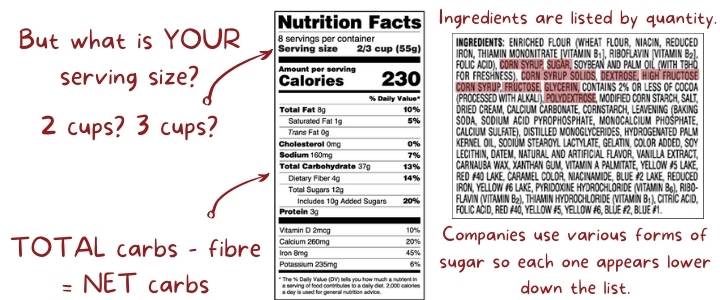
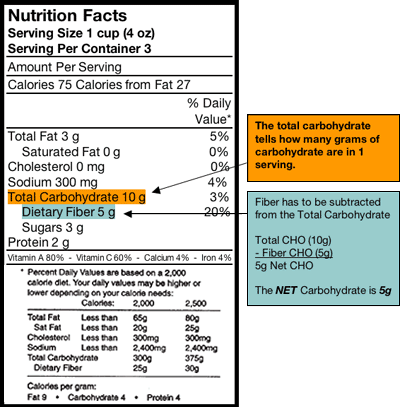

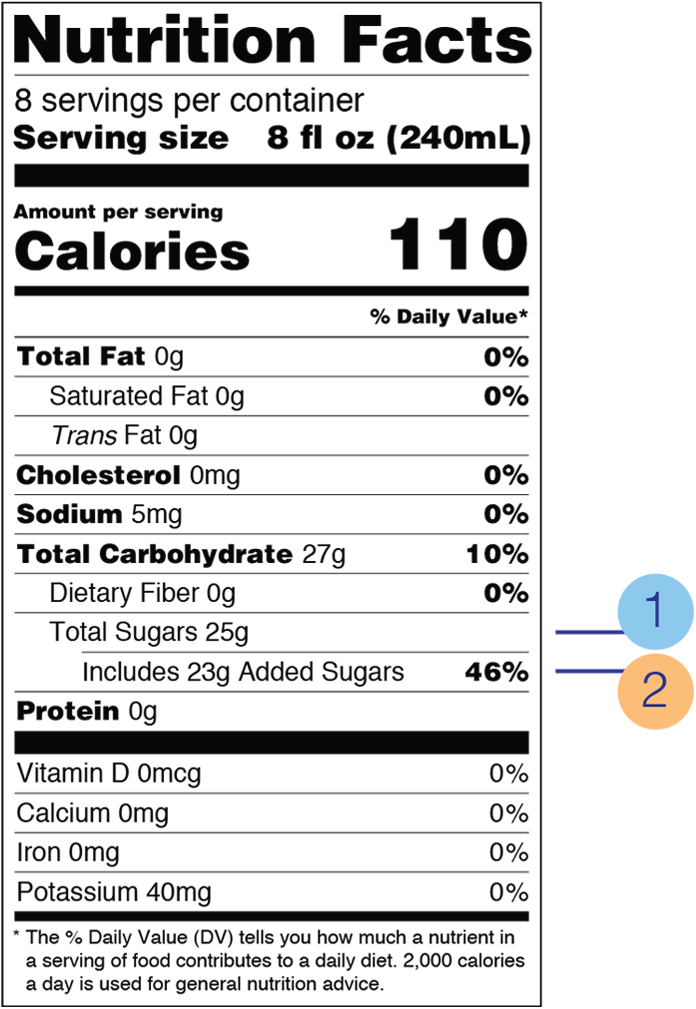
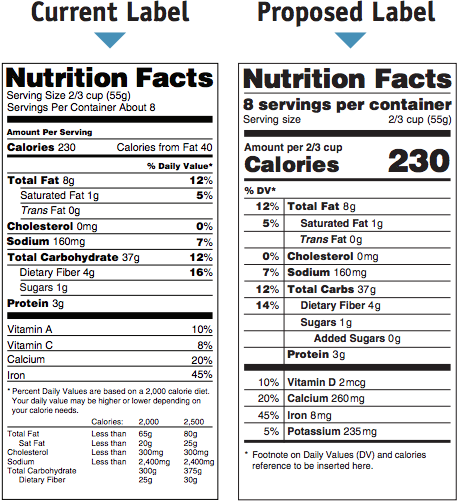

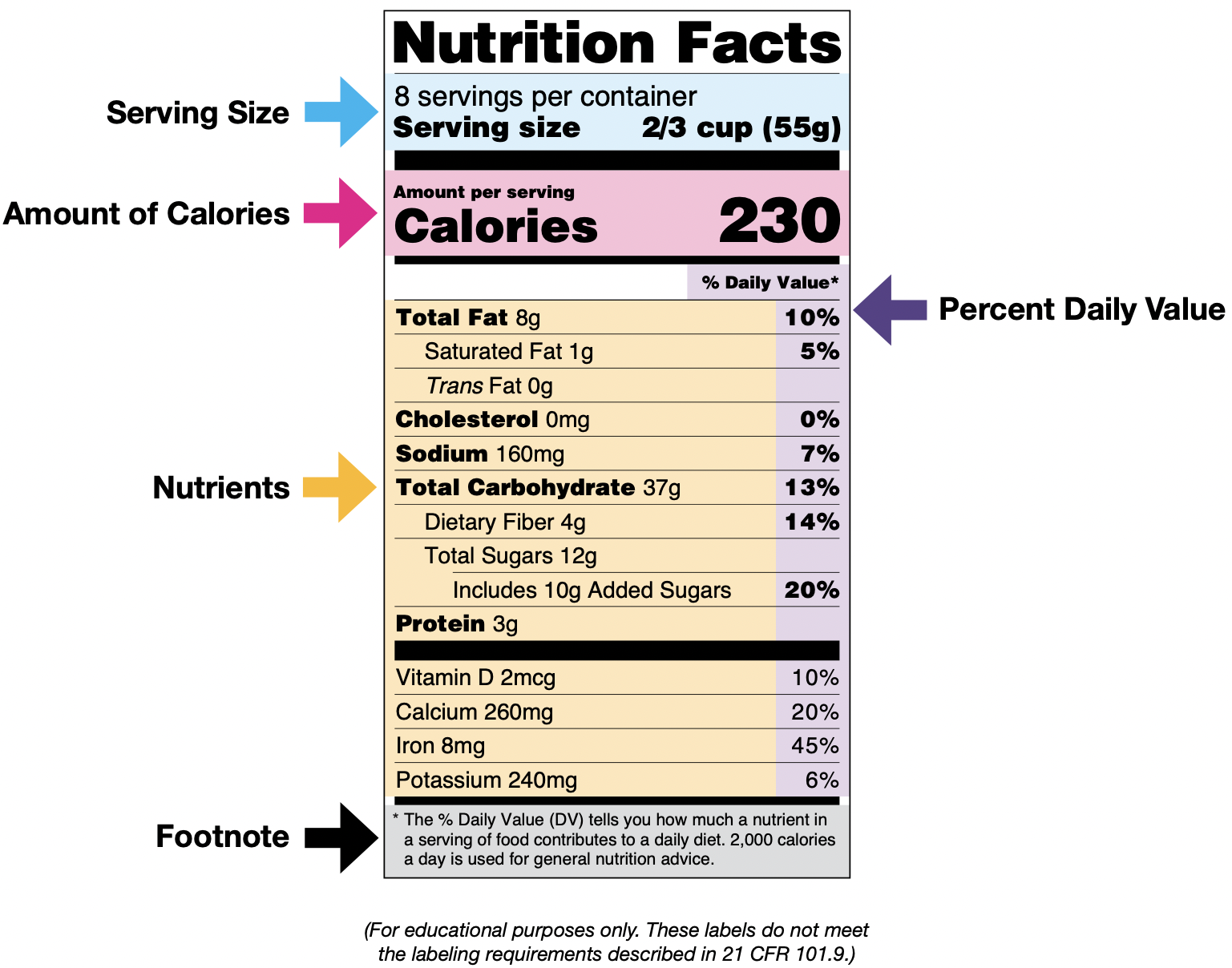



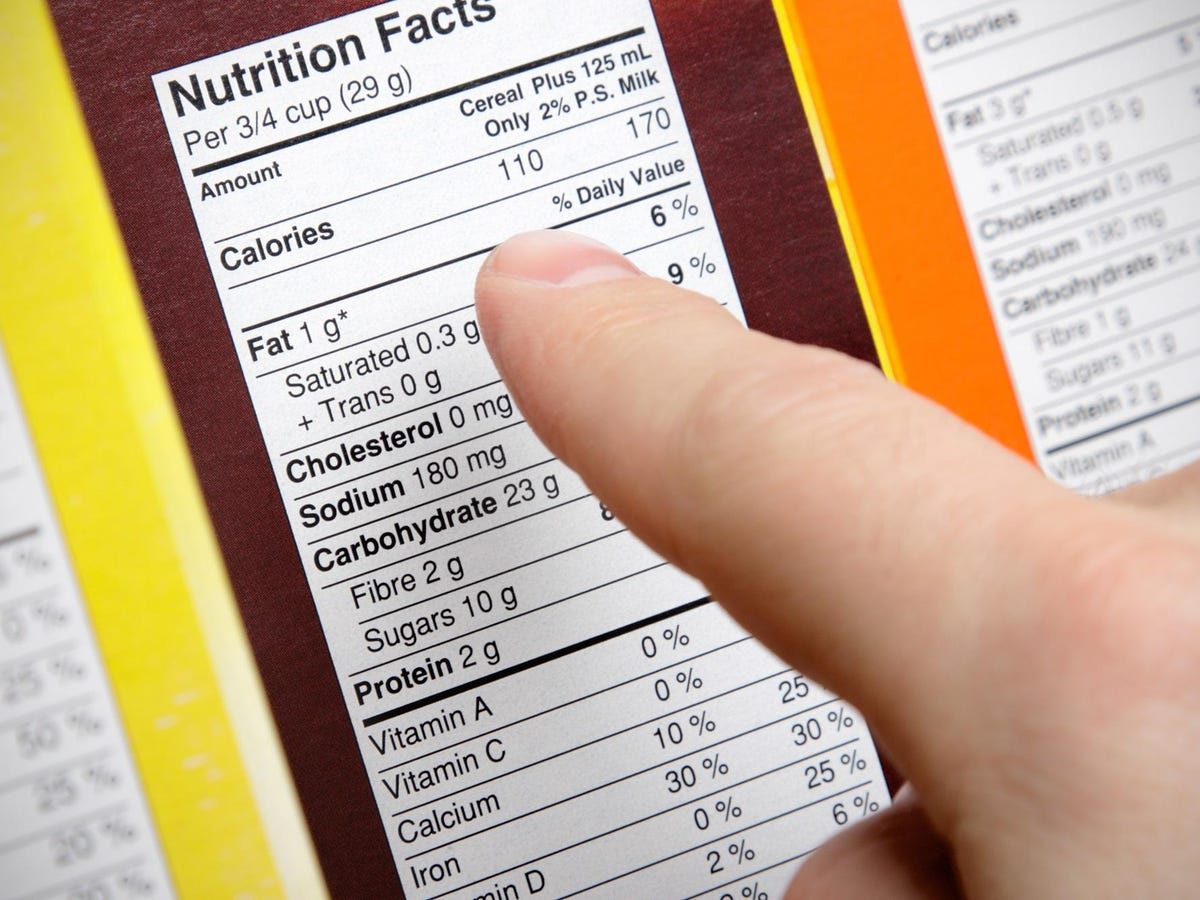





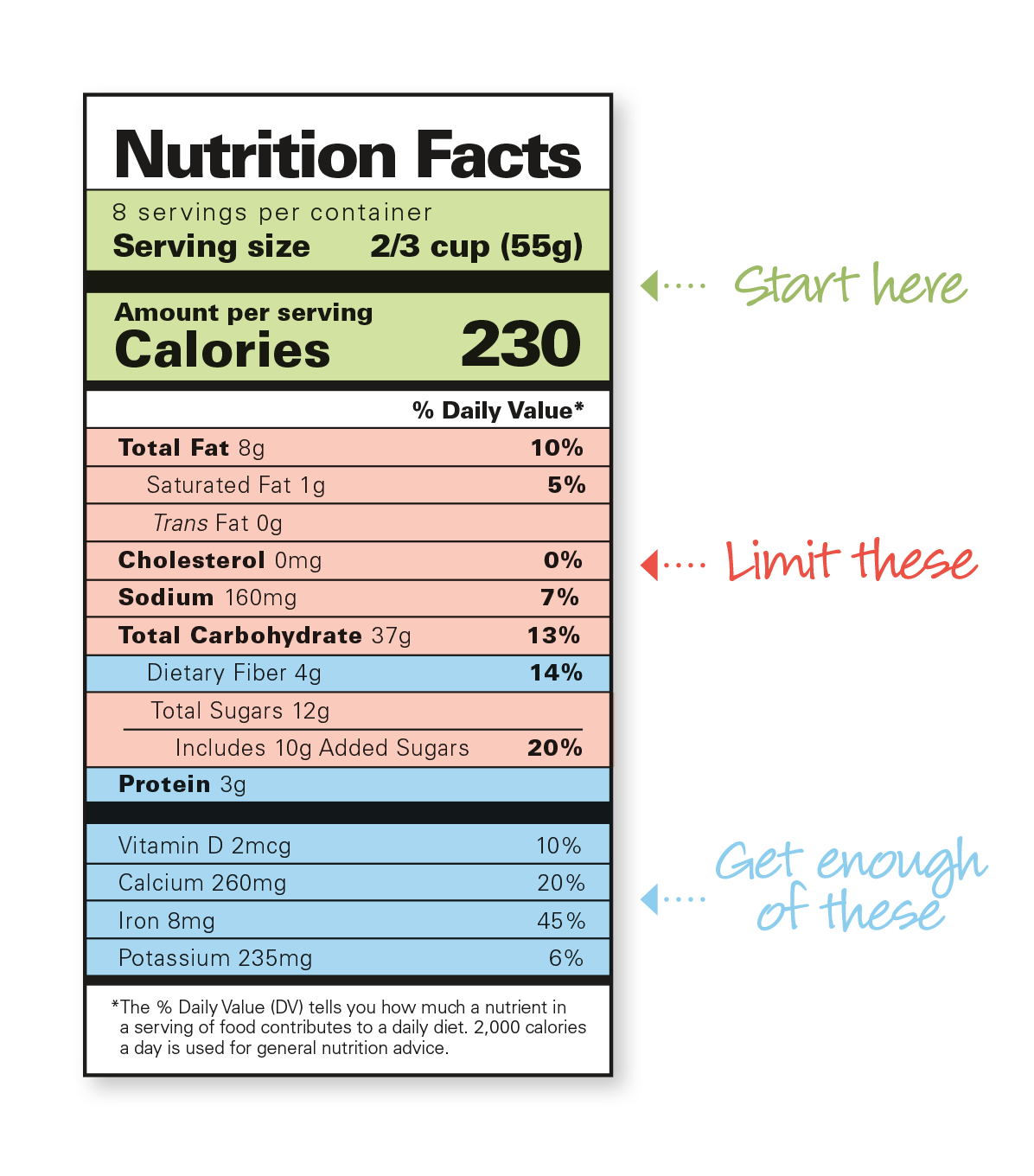
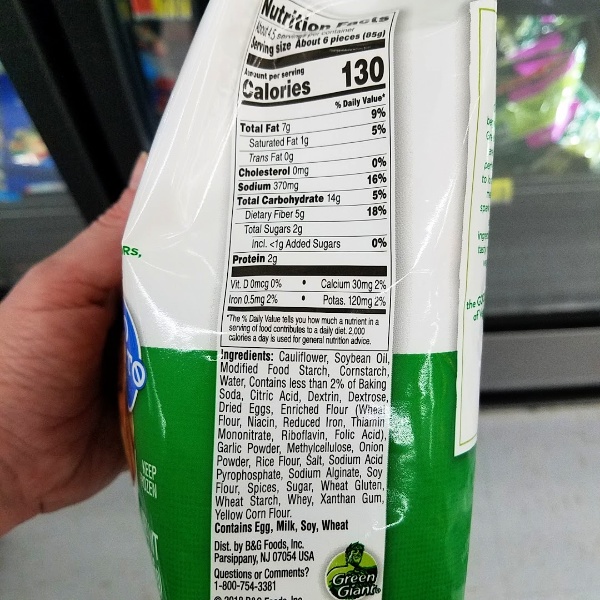




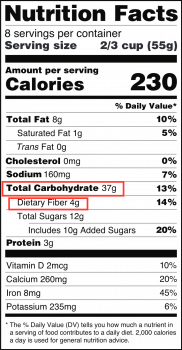
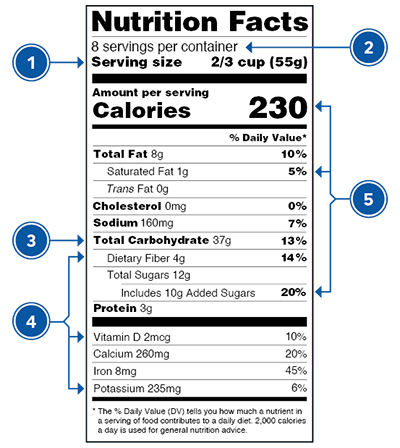
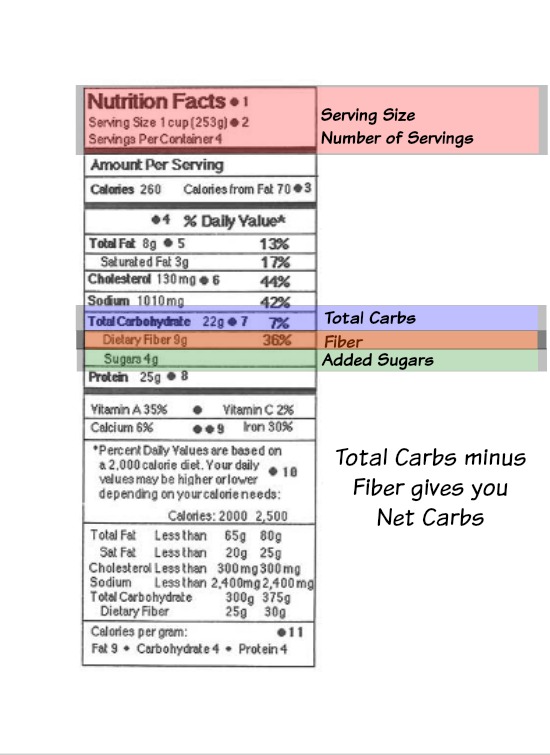
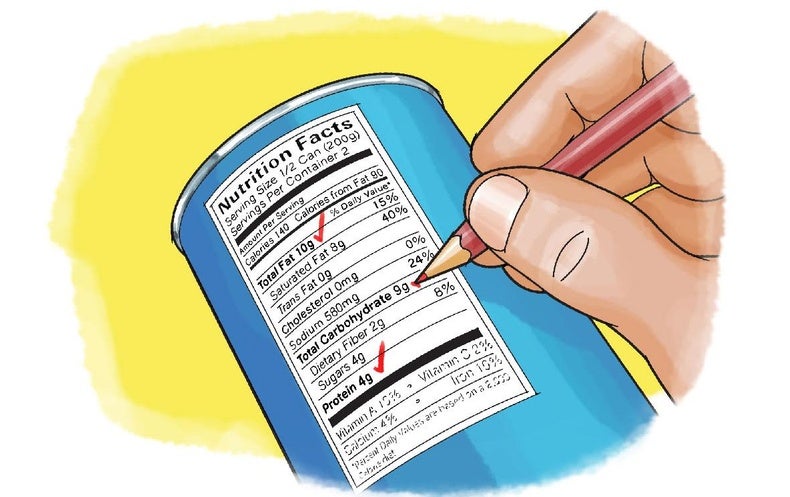
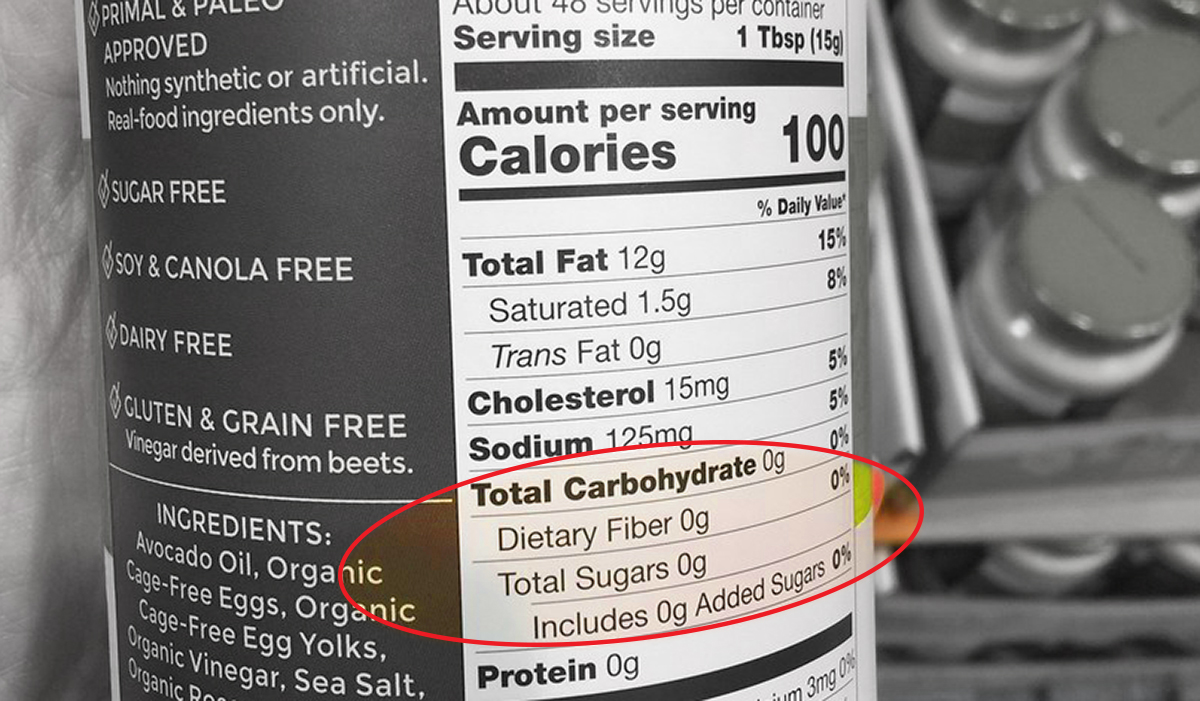

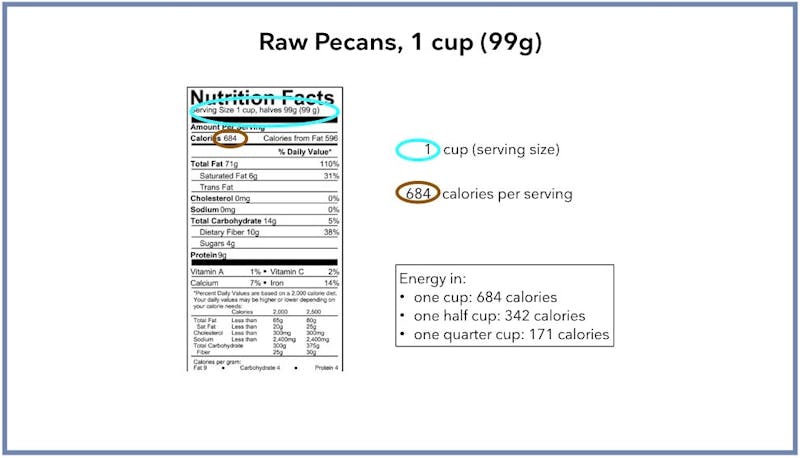

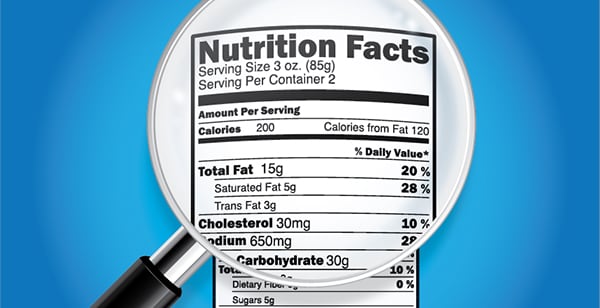
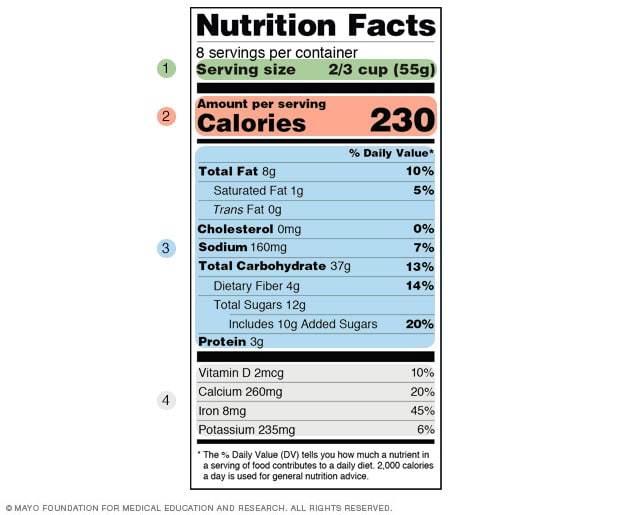


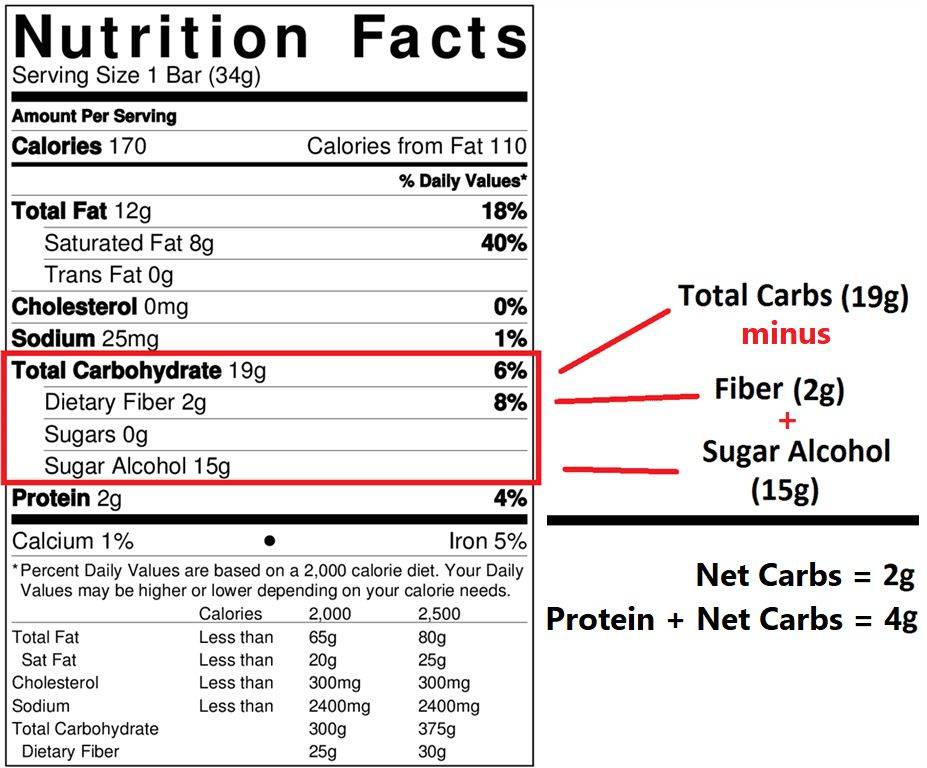
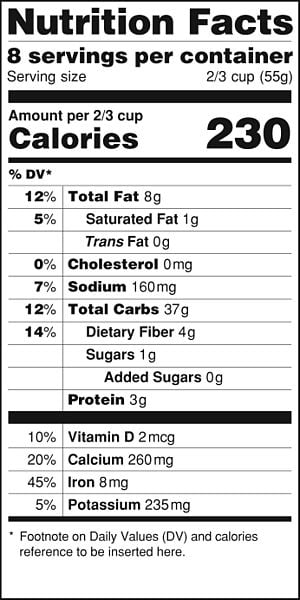
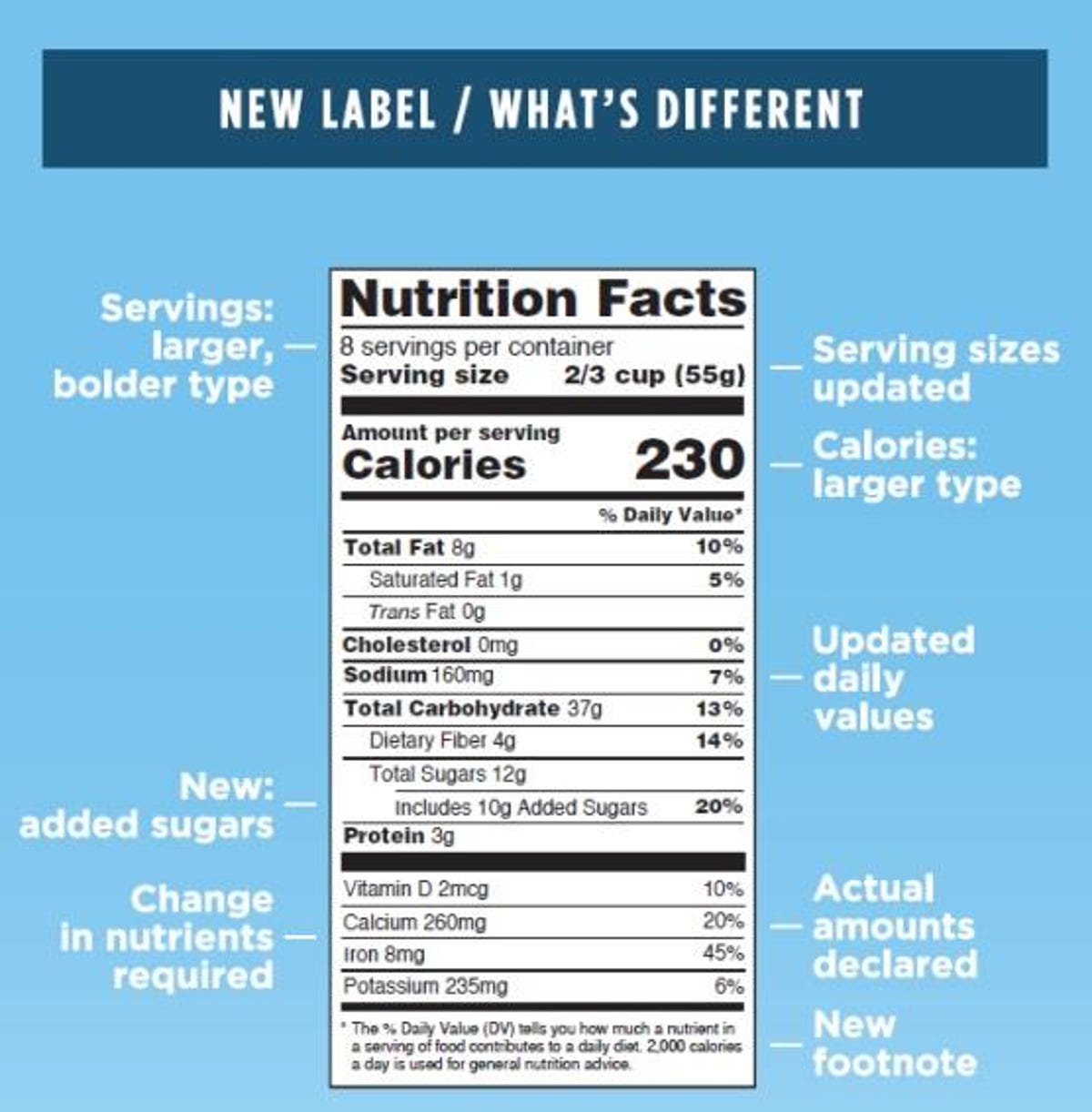
Post a Comment for "41 reading carbs on food labels"